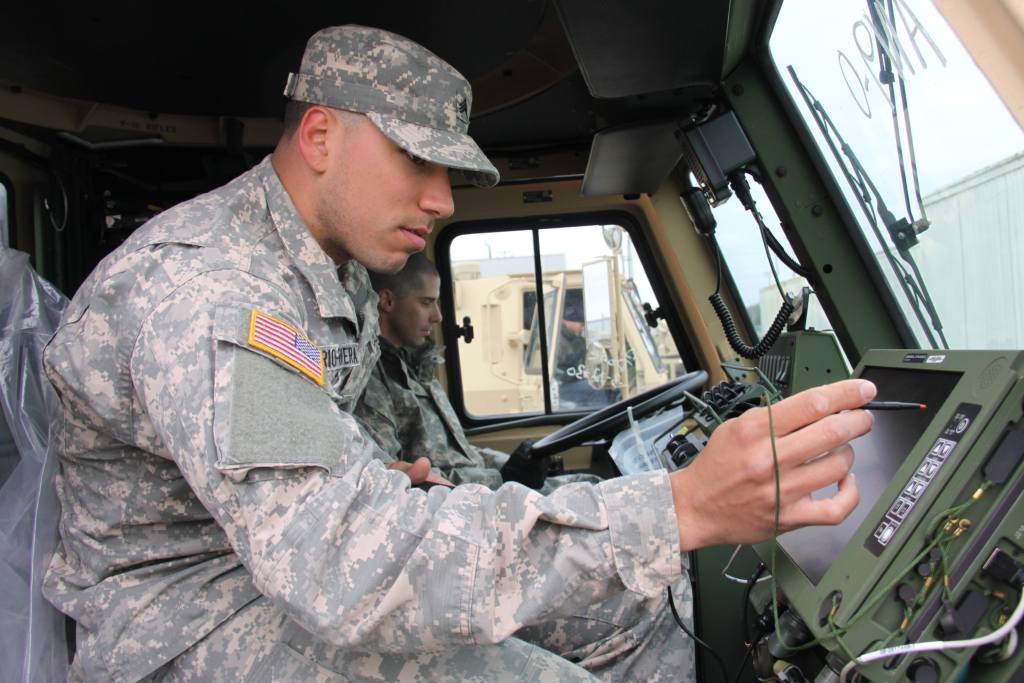
A key component of WIN-T Increment 2, the Soldier Network Extension (SNE), delivers the mobile network to the company level for the first time in U.S. Army communications history. First deployed to Afghanistan in 2013, soldiers found great value in using the SNE as a “hotspot” allowing other Soldiers to plug in, make phone calls and send and receive secure data from anywhere on the battlefield.
With valuable soldier feedback on the SNE coming from theater and testing at the Network Integration Evaluations (NIE), the Army’s PEO C3T and General Dynamics went to work together in 2014 to further improve and simplify the SNE’s operation and the overall network. Those improvements are being validated this month at NIE 15.1.
Excerpt on the SNE from our 2014 WIN-T Report:
Efforts to develop the upgrades to the Soldier Network Extension (SNE) began immediately after Follow-on Operational Test and Evaluation (FOT&E) feedback confirmed the need to improve Warfighter Information Network – Tactical (WIN-T) Inc. 2’s usability, particularly for the SNE and PoP interfaces. Test results following NIE 13.2 indicated that the original network extension was not operationally effective due to the complexity of operation and reliability problems. In response, the Army planned to correct deficiencies and verify those corrections through a series of additional developmental tests.
General Dynamics immediately went to work to address the issues identified at NIE 13.1 by working with the Army to develop usability enhancements, which improved startup performance, user interface and troubleshooting capabilities. As a part of the improvements, the Army automated the startup for the SNE, significantly reducing the complexity and length of the startup process from the original network extension. More than a dozen buttons and switches were reduced from the SNE to a single startup switch, dropping the total time to get a networked vehicle up and running from over 12 minutes to just four and a half minutes, with far fewer lockups and much easier troubleshooting.
These enhancements were assessed during two intensive developmental tests executed first at the Aberdeen Test Center (ATC) at Aberdeen Proving Ground, MD in February 2014 and then at Ft. Bliss in June 2014. A follow-on evaluation is planned for the NIE 15.1 in October–November 2014. It is important to note that WIN-T Inc. 2 is not an isolated, single-component system. Several individual components serve different purposes that come together to establish the Army’s battlefield network. As the Under Secretary of Defense for Acquisition, Technology and Logistics (USD AT&L) noted, a majority of system components have demonstrated effectiveness and suitability at operational testing. Performance issues in one component are not indicative of whole-network issues. Feedback regarding these components must be evaluated with this in mind.
As any performance issues are identified and soldier feedback is received, the system is incrementally improved and an already-critical capability for our soldiers becomes even better. Testing and evaluation has repeatedly confirmed the tactical communications network will continue to effectively support soldier operations abroad.
“By giving me [the SNE] you are enabling me to do a lot more work on my own from wherever I am… Before I had to go to the company or to the battalion [command post] to access those services.” — COMPANY COMMANDER 2/1 AD

